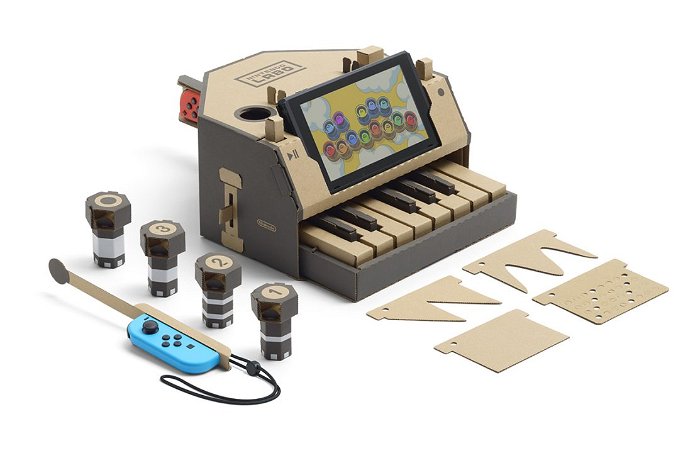A big part of the reason I love Nintendo doesn’t just stem from the nostalgia factor of having grown up enjoying their games, but also a deep respect of their commitment to innovation. While Sony is busy chasing trends—see the PS Move and PS VR—and Microsoft is content releasing “entertainment systems” that double as mid-tier gaming PCs; Nintendo is consistently exploring new ways to shake up the medium. The Nintendo Switch was an innovative idea for something so seemingly simple, and now we have the Nintendo Labo, another great innovation even if it is literally made of cardboard.

It probably comes as no shock to anyone that I love the Nintendo Labo: Variety Pack, particularly because it is so incredible in both concept and application—albeit a bit shaky in the latter. Divided into three portions, Make, Play, and Discover, players are given five cardboard toys (named “Toy-Cons”) to construct and play with upon completion. The majority of the fun with the Labo does come from the build, which offers interesting ways to fold each cardboard piece into unique shapes and working parts.
What makes building so fun is its accessibility. As you assemble your Toy-Cons the instructions are delivered on the Switch screen, showing you step-by-step which pieces to punch out of which sheet (categorized by letter), slowly showing you where and how to fold and offering a full range of viewing angles via the Switch’s touch-screen. The simplistic ingenuity of some of these parts was fascinating. When piecing together each part of the Fishing Rod to see how it collapsed/extended or fitting together the different parts of the Motorcycle there was rarely a moment where I wasn’t in awe of the charming simplicity of each Toy-Con’s functionality. The cardboard itself is surprisingly durable, albeit still cardboard and not completely indestructible—so how long the Toy-Cons last will likely depend on the maturity of the player using them.
Every Toy-Con’s accompanying mini-game shows off the hardware in a fun and mostly engaging way. However, how much enjoyment players get out of each depends largely on the individual player. Personally, I found fishing very calming and a pretty neat simulation although I did wish for greater depth in the way of lures and baits and maybe more of an overall challenge. The motorcycle races were fun and it definitely shows off the amount of depth in the Joy-Con motion controls, and I spent hours in the Piano’s Studio mode, playing around with songs I know, adding beats and trying to make something worth listening to.
But the thing I love most about the Labo is the “Discover” section. After each build, the game provides extra information about each Toy-Con, showing off some of the science behind how it works, offering tutorials and explaining extra unique features; all in a fun, easily digestible way thanks to the games three unique characters. Coupled with these informative breakdowns is the “Labo Garage,” which is essential a rudimentary programming tool. Within the Garage, players are given the ability to create nodes, set connections between them, and assign functions to each node, allowing for even greater creative ability. I barely scratched the surface of The Garage but the potential I saw in it was limitless.
And that’s why the Labo is so interesting to me: its capacity as an outlet for creativity coupled with its ability to be a teaching tool. While it is worth mentioning that some of these Toy-Cons would be a real challenge for the game’s lowest intended age group (there’s no way a six-year-old could handle the Piano on their own), the game itself takes such great strides to make sure everything is easily understood and instructions are easily followed.
Kids and adults alike are going to get a lot out of the Labo–the game itself is specifically targeted towards younger gamers and their parents–but I think who will get the most from it are kids already interested in science and engineering, even at a very basic level. I can definitely see a new generation of game developers or programmers siting the Labo as the launching point of their interest in the field.

When I saw the Nintendo Labo for the first time, all I could think was, “This is so crazy it just might work!” And it pleases me to no end that, for the most part, it does. Despite some shallow minigames, and the unknown longevity of the Toy-Cons themselves, what it does, and what it has the potential to do (particular in the realm of S.T.E.M learning) outshines the minor flaws it has as a physical product.






